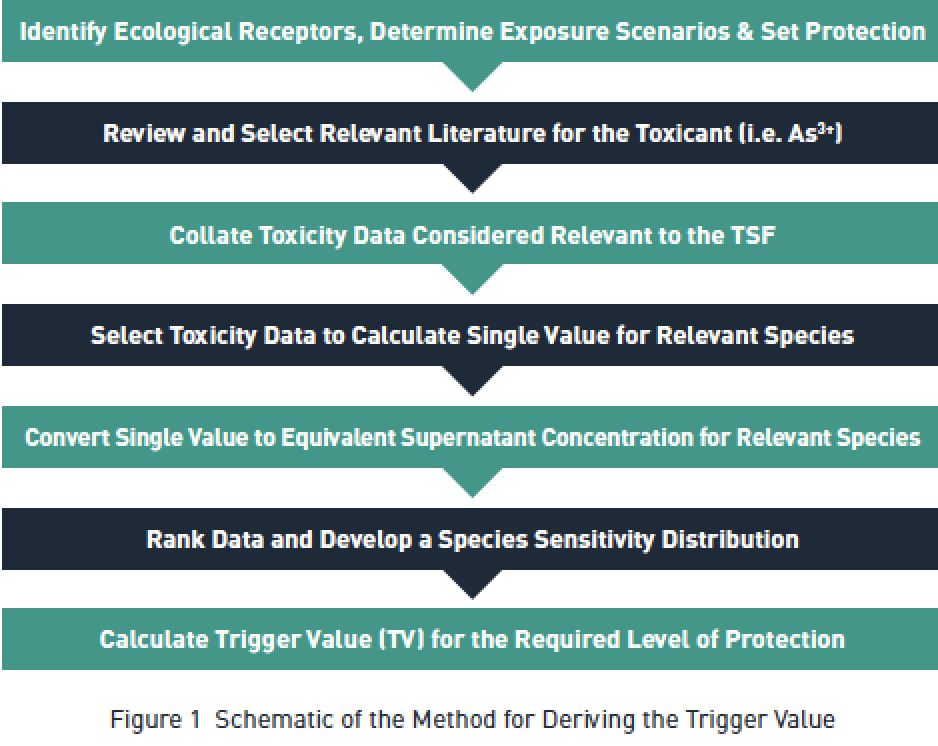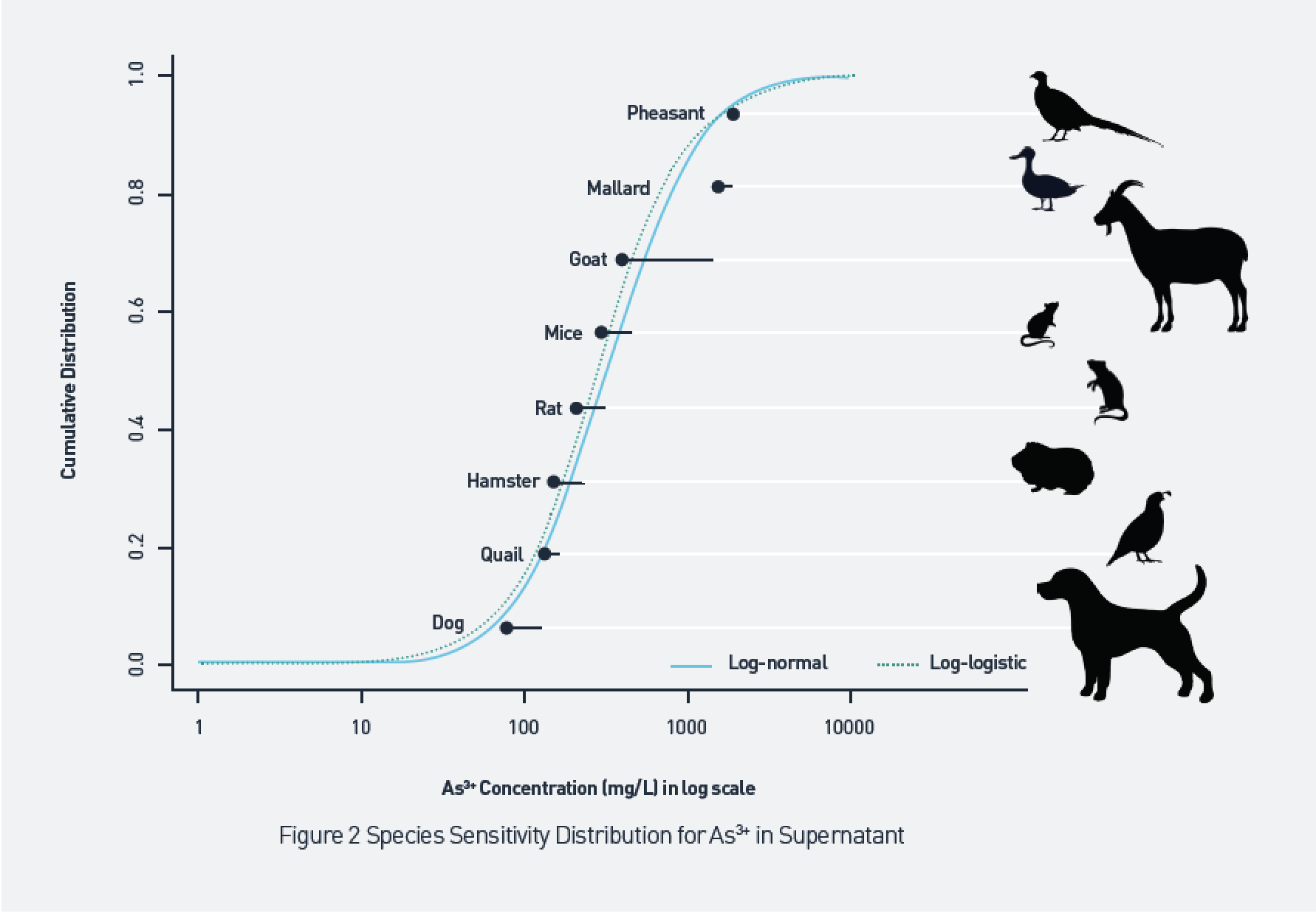Our Projects
Derivation of Risk-Based Criteria: Arsenic in Supernatant
The Issue
Enpoint’s client were seeking to amend their Environmental Protection Act licence to construct a modified design for the tailings storage facility (TSF) to utilise additional surface area between the cells and the adjacent Waste Dump to facilitate a 10-year extension on the life of mine. As part of the amendment process the Department of Water and Environmental Regulation (DWER) completed a risk assessment for the activities related to the TSF expansion. An outcome of the risk assessment was that the arsenic concentration in supernatant of the TSF has the potential to cause poor wildlife health or death if the supernatant was ingested by birds or other wildlife. For this reason, DWER added a condition to the licence requiring them to reduce the soluble arsenic contractions in the supernatant to 0.1mg/L (livestock drinking water trigger value ). The concentration of arsenic in the supernatant was 23mg/L. Therefore, treatment of the supernatant would be required, and costs associated with treatment were estimated to be in the order of $7M/year. Arsenic exists in the supernatant in the TSF as a result of the weathering of arsenic bearing minerals in the processed ore. Arsenic typically exists in water as two valencies, As3+ and As5+ where As3+ is more toxic than As5+ (ANZECC and ARMCANZ, 2000). Analytical results indicated that the predominant species of arsenic in the supernatant is As3+. The potential for arsenic in the supernatant of the TSF to cause poor wildlife health or death birds or other wildlife was dependent on the concentration in the supernatant and the likely exposure scenarios at the TSF.
An As3+ concentration of less than 27 mg/L in the supernatant of the TSF is therefore unlikely to cause unacceptable effects to birds and mammals even if they were to drink the supernatant at a daily drinking water consumption rate. The concentration is expected to pose even lower risks to birds and mammals under the more likely incidental exposure scenario. A concentration of 54mg/L may represent an upper bound to any trigger level to protect dogs that are known to frequent the site from time to time.
The Enpoint solution
Derivation of an alternative trigger value (TV) for arsenic in supernatant that is risk-based would provide a balance between ecological protection and the requirement for further investigation and/or management. This approach was presented to DWER prior to implementing and the approach and methodology for deriving a risk-based TV was agreed upon.
To allow derivation of a site-specific and risk-based TV for arsenic, Enpoint collated and reviewed toxicity data available in the scientific literature for the relevant receptors known / expected to be present at the site to derive an alternative TV that is protective of birds and other wildlife under the known or suspected exposure scenarios at the TSF.
The proposed methodology is outlined in Figure 1:

The data was ranked and the species sensitivity distribution (SSD) fit to the data using log normal and log logistic regression methods (Figure 2). The best fit model was then used to calculate the TV for As3+ in the supernatant for the protection levels. In this case, the best fit model was found to be the log normal model (red line in Figure 2). The model estimates for the 95% and 99% levels of protection level are 55.4 mg/L (red cross).and 26.8 mg/L (blue cross), respectively.

An As3+ concentration of less than 27 mg/L in the supernatant of the TSF is therefore unlikely to cause unacceptable effects to birds and mammals even if they were to drink the supernatant at a daily drinking water consumption rate. The concentration is expected to pose even lower risks to birds and mammals under the more likely incidental exposure scenario. A concentration of 54 mg/L may represent an upper bound to any trigger level to protect dogs that are known to frequent the site from time to time.
The outcomes
The TSF is intended to manage mine tailings and resulting supernatant. The TSF is not intended to support any ecological function or provide a drinking water source for wildlife or livestock. However, wildlife and/or livestock are known to frequent the facility given the facility is located within wildlife habitat and within a pastoral lease.
The assessment conducted by Enpoint identified that wildlife, namely birds and mammals do visit the TSF on an occasional basis. Livestock visitation is rare. Exposure to supernatant in the TSF by individual birds and mammals was therefore deemed to be short-term in nature and most likely to result from incidental ingestion. Drinking of supernatant by wildlife or livestock was not observed by the client and therefore was considered unlikely due to poor water quality due to salinity and alternative bore fed water sources.
The risk-based trigger value was derived in accordance with national guidance on ecological risk assessments. From the assessment, an arsenic concentration of less than 27 mg/L was considered unlikely to cause poor wildlife health or death under the exposure scenarios known or suspected to occur at the TSF. Given this value was derived for As3+, the most toxic valency of arsenic, the value is also considered applicable to total arsenic.
While there remains a level of conservatism in the derived TV, it was recommended that a fauna monitoring program was implemented to ensure that the exposure scenario assumptions used to derive the TV remain valid.